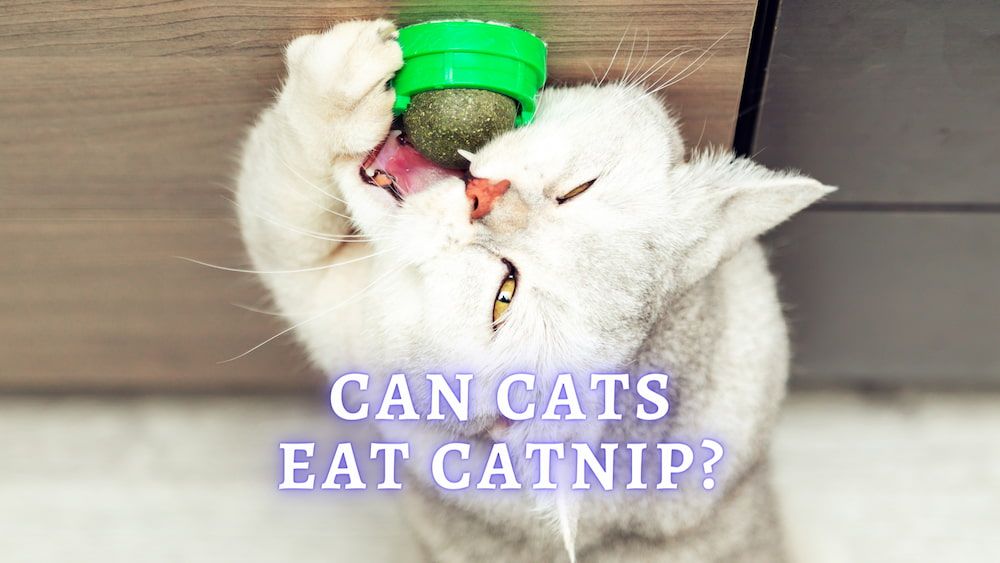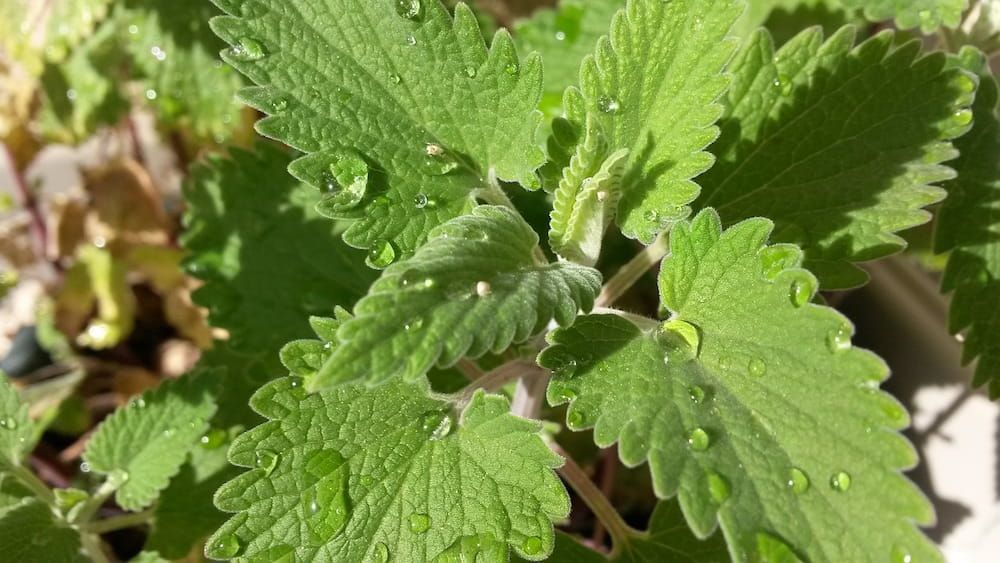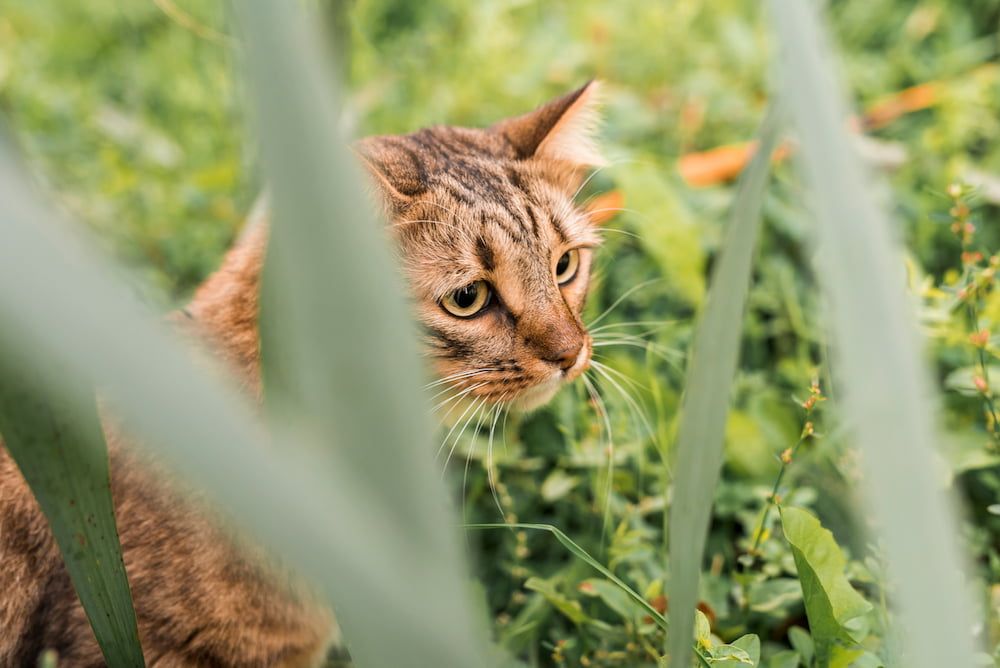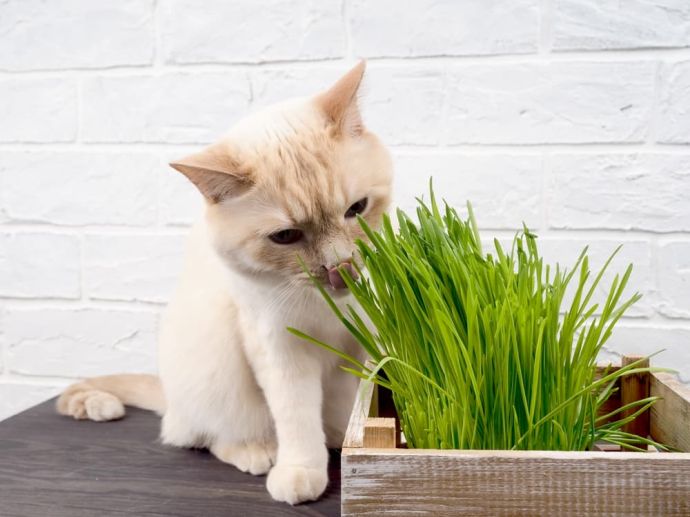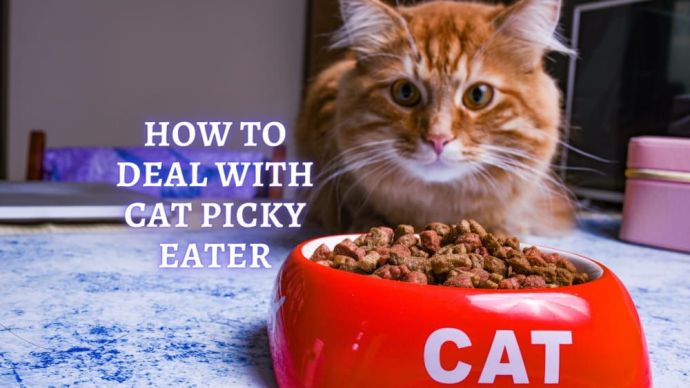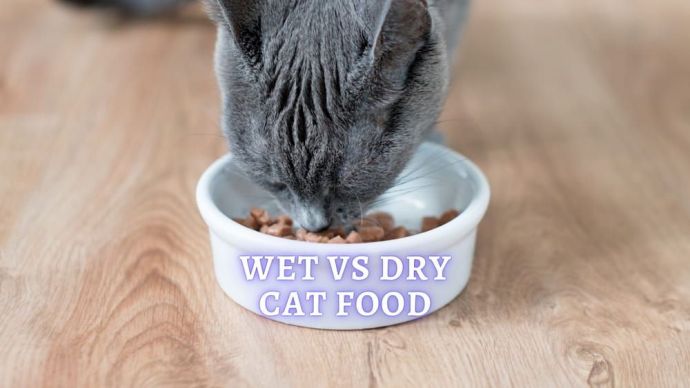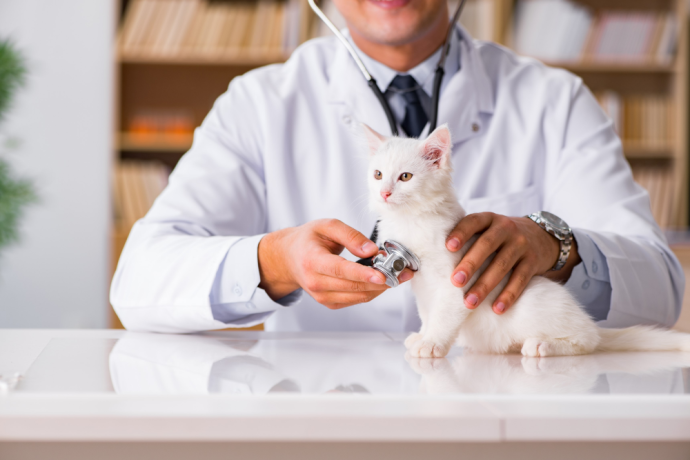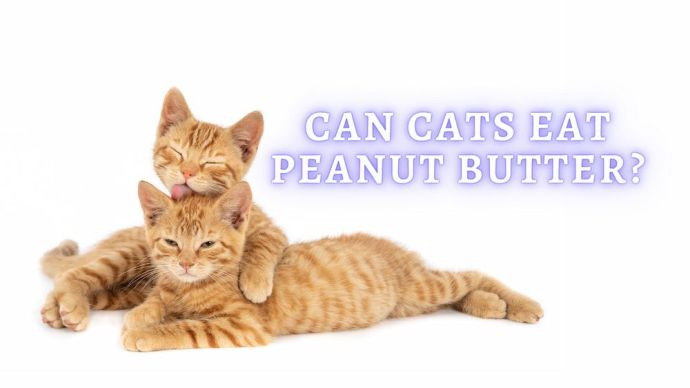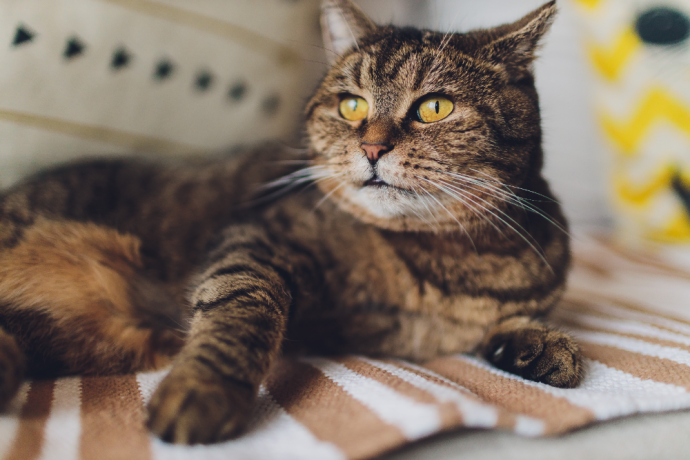Can Cats Eat Catnip? Are There Any Health Benefits to Cats Eating Catnip?
Written by:
Author: Scott Jeffrey
Scott is a professional blogger with 12+ years of experience in writing, and holds an MA in anthropology. He has two cats as housemates. Also, Scott is passionate to research on pet-related topics such as dog training, puppy feeding, and cat health.
View all 63 articlesLearn about our editorial process and veterinary review board.
Viewed: 97
Updated on: 07/05/2023
Many pet owners that have cats are familiar with catnip toys or catnip treats. They can see how it affects behavior in cats, but they need to be more familiar with the plant and how it is grown. If your cat splits open a toy or you give them loose catmint, you may have questions such as “Can cats eat catnip? and the effects it may have on a pet that just consumed it rather than inhaled it.
This guide will look into some common questions about treats and learn more about the plant. The next time you pick up a catnip toy or treat for your pet, you will be ready with all the answers.
What Is Catnip?
Catnip, scientifically known as Nepeta cataria, is a widely recognized herb from a member of the mint family. This perennial herb of the plant is native to parts of Europe, Asia, and Africa but has since become naturalized in North America, where it thrives easily. The plant boasts delicate, feathery, light-green leaves and lovely lavender flowers, making it an attractive addition to any garden or landscape.
Interestingly, treat is not only cherished by feline enthusiasts but has also been utilized by humans for centuries. The leaves of this versatile plant can be steeped to create a soothing herbal tea, while the blossoms are believed to possess cough-relieving properties. Additionally, catmint has found its way into the world of natural remedies, serving as a critical component in many forms of some eco-friendly insect repellents. This multifaceted herb continues to captivate interest due to its unique effects on cats and its myriad of uses for people.
What Does Catnip Do to Cats?
Cats possess a unique scent organ known as the vomeronasal gland, which is found on the roof of their mouth. This extraordinary organ enables scents gathered in the nose and mouth to be transmitted directly to the brain. The critical component responsible for catnip’s effects on felines is an oil called nepetalactone, found within the plant’s leaves. To experience these effects, pets must smell the catmint, allowing the scent to interact with their specialized olfactory system.
Nepetalactone mimics feline sex hormones, which explains why cats under the influence of this treat often exhibit behaviors akin to those of a female pet in heat. It is important to note that both male and female cats can experience these effects. Reactions to catmint can vary, with some cats displaying overt signs of affection, relaxation, and a heightened sense of happiness, while others may become more playful or aggressive. In many cases, it can help reduce anxiety and alleviate pain in cats. As a result, some veterinarians recommend using this treats to address separation anxiety, mainly when a cat has left home alone for an extended period.
While catnip is known for its stunning effects on felines, it’s important to note that not all cats will react to it. Approximately 60% of cats are estimated to respond to catmint, with the sensitivity being hereditary. If your cat doesn’t react to this treat, consider alternative options such as silver vine, a safe and medicinal plant. Silvervine, scientifically known as Actinidia polygama, is found in China, Japan, and Russia’s mountainous regions. Belonging to the kiwi family (Actinidiaceae), this plant gets its name from the silver-white markings on its leaves. It can offer a similar stimulating experience for cats who do not respond to catnip.
Is Catnip Really Safe For Your Cat?
Catnip is generally considered safe for pets; they can even ingest the plant without significant harm. Catnip may provide some benefits for their digestive tract. Historically, eating the this plant has been utilized by humans for its antidiarrheal properties, highlighting its potential positive effects on the gastrointestinal system.
However, ensuring that your cat does not consume excessive amounts of catmint is crucial, as this can lead to your cat’s digestive system being upset. While moderate amounts of this herb are typically harmless, overindulgence could cause stomach discomfort or other issues. As a responsible pet owner, monitoring your cat’s interaction with this treat and providing them with an appropriate amount to enjoy its stimulating effects without compromising their health is essential.
Are There Any Health Benefits to Cats Eating Catnip?
Catnip can indeed have a positive impact on a pet’s well-being, offering several health benefits. One such advantage is its ability to reduce stress and promote relaxation, contributing to their overall emotional health. For those felines that react playfully to catmint, the herb can encourage physical activity and play, essential for maintaining a safe weight and promoting muscle strength. Moreover, this treat has been known to help alleviate skin irritations in cats, providing relief from discomfort.
Another notable benefit of catnip is its natural pest-repellent properties. The scent of this treat is generally disliked by most pests, including mosquitoes, making it an effective deterrent against these unwanted visitors. By incorporating catnip into your pet’s environment, you can provide mental and physical stimulation and protect them from potential harm caused by insect bites. Overall, catmint can be a valuable addition to your feline companion’s life, contributing to their health and happiness.
Can Cats Eat Fresh Catnip?
For those who grow it in their gardens, you might be curious about whether it is safe to offer fresh catnip to your feline friend. Rest assured, pets can safely consume fresh catnip leaves without the need to dry them. Although dried catmint is commonly found in toys and other cat products, your pet can enjoy the fresh variant. However, if your pet has access to the outdoors, monitoring their interaction with the this plant is essential, as excessive consumption can lead to an upset stomach. Supervising your cat’s enjoyment of fresh catnip can prevent any potential issues arising from overindulgence.
If you have a green thumb producing dried catmint leaves takes just one quick season of growth, and cats enjoy having it in the garden, making your house a popular place. The active compound in catmint will start to produce its effects after the plant flowers, and smelling it in the garden will likely cause our cat’s brain to react when they find it. Keep your catnip leaves from other pets in the area, or hold back your plant with fencing. Keep your catnip safe, and you can harvest it for toys or use it to boost your cat’s mood by storing your extra leaves in a jar.
Fresh catmint is gentler on a cat’s mouth than its dried counterpart, making it an excellent option for some kitties. Felines may prefer it fresh or dried catnip providing either type as an occasional treat is excellent. Remember that a pet’s tolerance to this treat may increase with frequent exposure, so moderation is key. If you cultivate catnip in your garden, it might be a good idea to restrict access to the plant’s leaves until it is fully grown and ready for harvest, ensuring that your cat enjoys this special treat responsibly.
READ MORE: Can Cats Eat Honey?
How Much Catnip Should You Give a Cat?
One crucial aspect of introducing this treat to your feline friend is the appropriate dosage. While catmint is generally safe and non-toxic, it’s always a good idea to consult your veterinarian before offering it to your cat for the first time. Remember that moderation is vital, as excessive substance consumption can lead to adverse effects.
Catnip is not harmful to pet; however, ingesting it in large quantities at once could result in an upset stomach. To avoid discomfort, you should provide small amounts of catmint and observe how your cat responds. This cautious approach allows you to gauge your pet’s reaction and tolerance to catnip while ensuring their well-being. As a responsible pet owner, monitoring your cat’s interaction with catnip and offering it in moderation will help maintain a safe and enjoyable experience for your furry companion.
Can Cats Overeat Catnip?
As previously mentioned, overindulgence in catnip can lead to undesirable consequences for your feline companion. Consuming excessive amounts of catmint may result in vomiting and diarrhea, causing discomfort for your pet. Most cats will recover from such episodes without complications; you must contact your veterinarian if symptoms persist. The effects of catnip typically last around 10 minutes, after which they gradually wear off. It may take approximately 30 minutes without exposure to catnip before a pet becomes susceptible to its effects again.
When you ask, “Can cats eat catnip?” we discover that moderation is usually the key.
Store it in an airtight container to maintain catmint’s potency, as it loses its effectiveness over time. When administering catnip to your pet, remember that a small amount is usually sufficient, and you can always consult your veterinarian for guidance on the appropriate dosage. Fresh plant tends to be more potent than its dried counterpart, so less is needed to achieve the desired effect. Additionally, it is advisable to avoid highly concentrated oils due to their potency, as they may cause health issues such as dizziness or difficulty walking if consumed excessively.
Do’s and Don’ts of Catnip
Do’s
Don’t’s
- Encourage play and physical activity. Introducing interactive toys or climbing structures, such as a rechargeable laser pointer or a pet pyramid, can help your kitty expend excess energy while enjoying the stimulating effects of catnip in a safe and controlled environment.
- Store catnip in a secure location that your cat cannot easily access. Although most pets will naturally stop consuming catnip once they’ve had enough, it’s always better to err on the side of caution and prevent any potential overindulgence that could lead to an upset stomach.
- Vacuuming handy after your cat has finished playing with catnip is a good idea, as the substance can create a mess that’s best cleaned up promptly. This ensures that your living space remains tidy while allowing your cat to indulge in their favorite treat.
- Give catnip to cats that exhibit aggressive behavior when exposed to it. Monitoring your pet’s reaction to catnip is crucial to ensure that the experience remains enjoyable and doesn’t exacerbate any existing aggressive tendencies.
- Get your pet used to a high dose like a concentrated oil or regularly give them catnip in higher doses. Their tolerance will increase, and they won’t enjoy the experience as much. Catnip is not addictive, but your pet can build up its tolerance, so their favorable experiences with catnip will require a higher potency. Catnip is something that should be a special treat.
People also ask
What happens if cats eat catnip?
When cats consume catmint, they often experience fascinating behavioral changes due to a compound called nepetalactone in the plant. This substance interacts with the feline’s olfactory system, eliciting different reactions that can vary from one cat to another. Some pets may become more playful and energetic, showing behaviors such as rolling, rubbing, and chasing imaginary prey. Others might exhibit a more relaxed demeanor, purring and enjoying the soothing effects of the herb. Not all cats are affected by catnip; sensitivity to the plant is hereditary, with approximately 60% of pets responding to its products. While it is generally safe to ingest, overconsumption can lead to an upset stomach, causing symptoms like vomiting or diarrhea. As a responsible pet owner, monitoring your pet’s interaction with catmint is crucial as ensuring they enjoy it in moderation.
Are cats supposed to eat catnip or just smell it?
Cats can both eat and smell this treat. When pets smell catnip, they experience a more potent reaction, as the nepetalactone compound in the plant stimulates their olfactory system, leading to various behavioral changes such as playfulness or relaxation. On the other hand, when cats eat catnip, the effects might be milder and often result in a more subdued response, like calmness or drowsiness.
How much catnip can I give my cat?
When introducing catnip to your cat, it’s best to start with a small amount to gauge their reaction. Begin by offering them a pinch of this treat under your pet’s nose or letting them play with a toy containing a catmint pouch for a few minutes. Observe how your kitty responds to this initial exposure and adjust the amount accordingly. Avoid giving too much catnip when you play the first time.
Does catnip sedate cats?
Catnip can have varying effects on pets, depending on the individual and how they interact with the plant. While some cats and young kittens may become more playful and energetic when exposed to catnip, others might experience a calming, soothing effect. If you’re considering using catnip to help calm your cat, observing their reaction to the plant and consulting with your veterinarian for guidance is crucial.
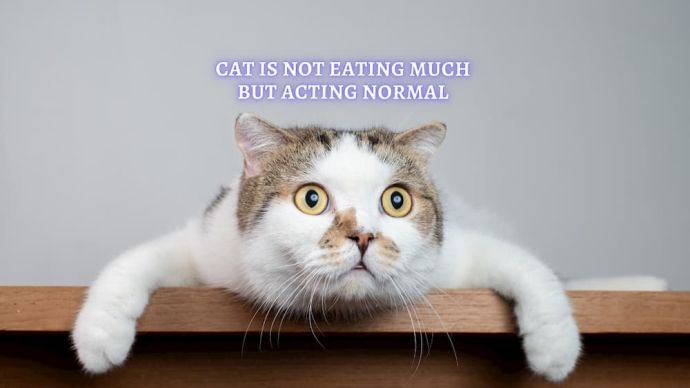 Cat Diet & Nutrition My Cat not Eating much but Acting normal: Reasons and Solutions
Cat Diet & Nutrition My Cat not Eating much but Acting normal: Reasons and Solutions - 12782
- 0
 Cat Veterinary Tips Dehydration in Cats: Causes, Signs, Symptoms, and Treatment
Cat Veterinary Tips Dehydration in Cats: Causes, Signs, Symptoms, and Treatment - 411
- 0
 Cat Care Why Does My Cat Attack My Legs? 10 Reasons Why and What To Do About It (Vet-Approved Advice)
Cat Care Why Does My Cat Attack My Legs? 10 Reasons Why and What To Do About It (Vet-Approved Advice) - 46013
- 21
 Cat Veterinary Tips Cat Stomach Gurgling: Vet Advice on Why is Your Cat Stomach Gurgling?
Cat Veterinary Tips Cat Stomach Gurgling: Vet Advice on Why is Your Cat Stomach Gurgling? - 36469
- 4
 Cat Veterinary Tips My Cat Lost its Voice: Can Cats get Laryngitis? (Vet Advice)
Cat Veterinary Tips My Cat Lost its Voice: Can Cats get Laryngitis? (Vet Advice) - 23554
- 13









